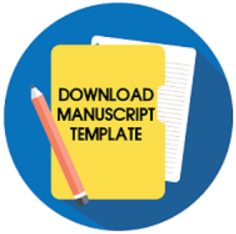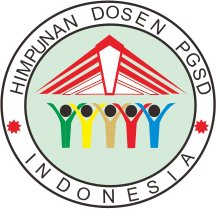Development of Multimedia Based E-Folklore to Improve Reading Comprehension of Grade IV Elementary School
Downloads
Downloads
Andika, R., & Purba, M. (2023). Folklore study of the existence of the performing arts of Jaran Kepang "Pati Kenanga Lima Pandawa" Medan Marelan. Siwayang Journal: Publikasi Ilmiah Bidang Pariwisata, Kebudayaan, dan Antropologi, 2(3), 93-104. https://doi.org/10.54443/siwayang.v2i3.1637
Anggriani, P., Rahma, N. R., Ningsih, H. I., Afriansyah, D., Habisukan, U. H., & Anggun, D. P. (2020). Review: The relationship between interest and learning motivation with learning outcomes. Prosiding Seminar Nasional Pendidikan Biologi 2020, 55–64. https://proceedings.radenfatah.ac.id/index.php/semnaspbio/article/view/517
Budyastuti, Y., & Fauziati, E. (2021). Application of constructivism theory in interactive online learning. Jurnal Papeda: Jurnal Publikasi Pendidikan Dasar, 3(2), 112–119. https://doi.org/10.36232/jurnalpendidikandasar.v3i2.1126
Firdausiyah, M., Kironoratri, L., & Ermawati, D. (2024). The effectiveness of multiliteracy model on reading comprehension ability of folk tale material. Alfabeta: Jurnal Bahasa, Sastra, Dan Pembelajarannya, 7(1), 270–280. https://doi.org/10.33503/alfabeta.v7i1.4071
Hidayatullah, A., Su'ad, S., & Kanzunnudin, M. (2020). Analysis of structure, function, and values in nawangsih folklore for elementary school students' character education. Kredo: Jurnal Ilmiah Bahasa Dan Sastra, 4(1), 148–167. https://doi.org/10.24176/kredo.v4i1.4845
Hoerudin, C. W. (2023). Student understanding of language learning. Jurnal Al-Amar (JAA), 4(2), 121– 130. https://ojs-steialamar.org/index.php/JAA/article/view/105
Maivi, C., & Erita, Y. (2023). Development of science learning media using articulate storyline 3 based on discovery learning in grade IV elementary school. Journal Of Social Science Research, 3, 1188– 1198. https://jptam.org/index.php/jptam/article/view/9755
Net, W. W. W. P. (2023). Developing android-based learning media to enhance early reading competence of elementary school students. Pegem Journal of Education and Instruction, 13(4), 43–55. https://doi.org/10.47750/pegegog.13.04.06
Putri, D. N. S., Islamiah, F., Andini, T., & Marini, A. (2022). Analysis of the influence of learning using interactive media on elementary school students' learning outcomes. Jurnal Pendidikan Dasar Dan Sosial Humaniora, 2(2), 365–376.
Ramdani, D., Supriatna, E., & Yuliani, W. (2023). Validity and reliability of the emotional maturity questionnaire. Fokus: Kajian Bimbingan & Konseling Dalam Pendidikan, 6(3), 232–238. https://doi.org/10.22460/fokus.v6i3.10869
Riyani, M., Ramazan, Habsari, N. T., & Nafisah, D. (2019). Utilization of folklore of the origins of langsa city as a media for peace education. Pros. SemNas. Peningkatan Mutu Pendidikan, 1, 24– 32. http://publikasi.fkip-unsam.org/index.php/semnas2019/article/view/10
Sari, W. N., & Ahmad, M. (2021). Development of digital flipbook learning media in elementary schools. Edukatif : Jurnal Ilmu Pendidikan, 3(5), 2819–2826. https://edukatif.org/index.php/edukatif/article/view/1012
Subaedah, Wahab, A., Azhar, M., Sudarmono, M. A., & Zainal, A. Q. (2023). Constructive learning models on students' understanding and application of learning concepts. Tafkir: Interdisciplinary Journal of Islamic Education, 4(2), 363–372. https://doi.org/10.31538/tijie.v4i2.524
Sulikhah, S., Utomo, S., & Santoso, S. (2020). The influence of survey question read reflect recite Review (Sq4R) technique and scheme technique on reading comprehension ability in Indonesian language subjects of elementary school students in Grade III in Karanganyar District, Demak. Kredo : Jurnal Ilmiah Bahasa dan Sastra, 3(2), 365–385. https://doi.org/10.24176/kredo.v3i2.4752
Tazkiyah, A., Hendrik, M., & Nurjannah, N. (2021). Interactive media development of clever horsfield's tarsier fable story using articulate storyline 3 for four. Sirok Bastra, 9(2), 113–124. https://doi.org/10.37671/sb.v9i2.313
Tusfiana, I. A., & Tryanasari, D. (2020). Elementary school students' reading comprehension difficulties. Prosiding Konferensi Ilmiah Dasar, 2, 78–85. http://prosiding.unipma.ac.id/index.php/KID
Wonmaly, W. (2023). Semiotic Studies: The form and meaning of non-oral folklore symbols of the Moi Kelim tribe as an implementation of the local culture of Southwest Papua. Jurnal Ilmiah Multidisiplin Keilmuan Mandira Cendikia, 1(6).https://journal.mandiracendikia.com/index.php/mdi/article/view/1137
Yesika, D. H., Pribowo, F. S. P., & Afiani, K. D. A. (2020). Analysis of the SQ3R learning model in improving elementary school students' reading comprehension. Jurnal Pendidikan Modern, 6(1), 36–46. https://doi.org/10.37471/jpm.v6i1.122
The copyright of the received article shall be assigned to the journal as the publisher of the journal. The intended copyright includes the right to publish the article in various forms (including reprints). The journal maintains the publishing rights to the published articles.

Jurnal Prima Edukasia by http://journal.uny.ac.id/index.php/jpe/index is licensed under a Creative Commons Attribution-ShareAlike 4.0 International License.


























